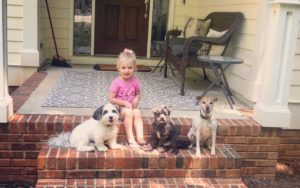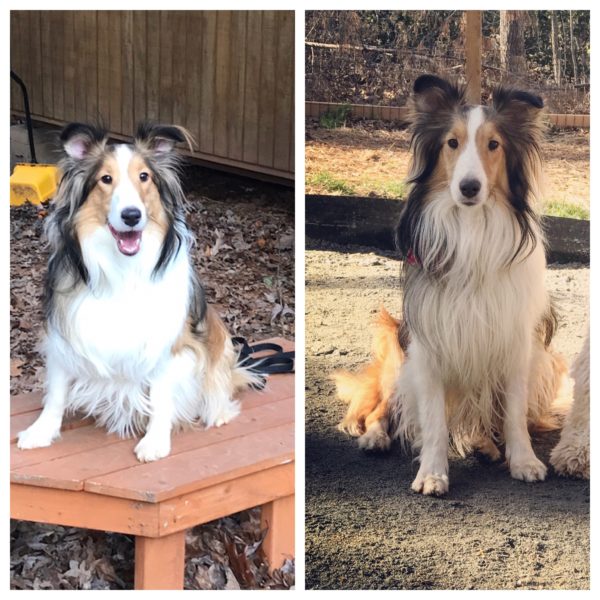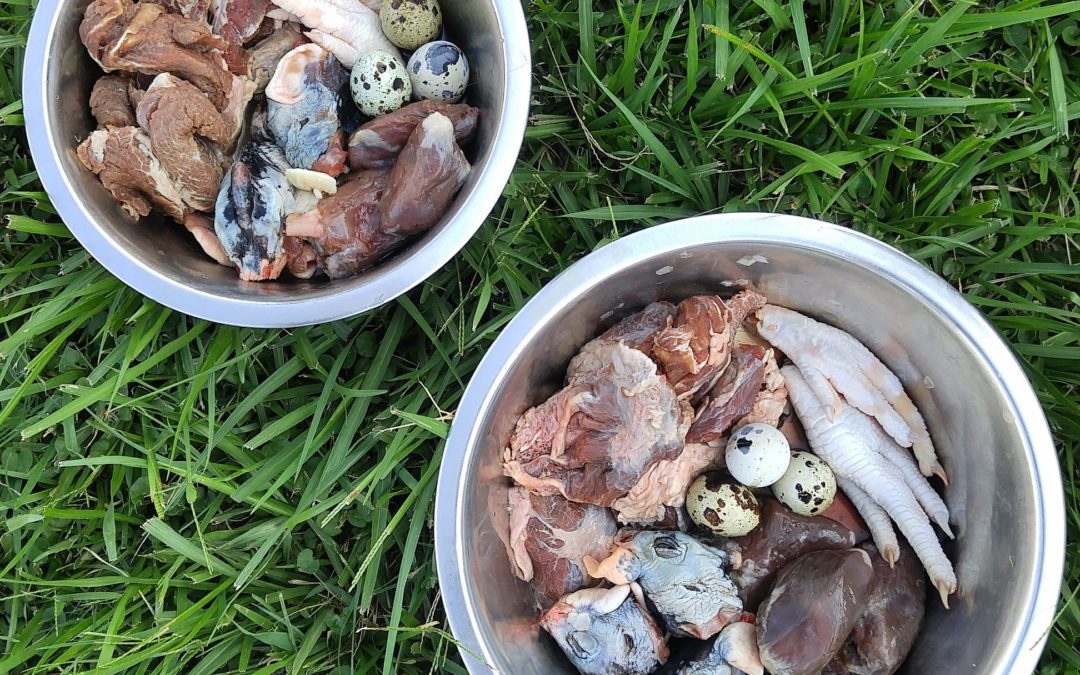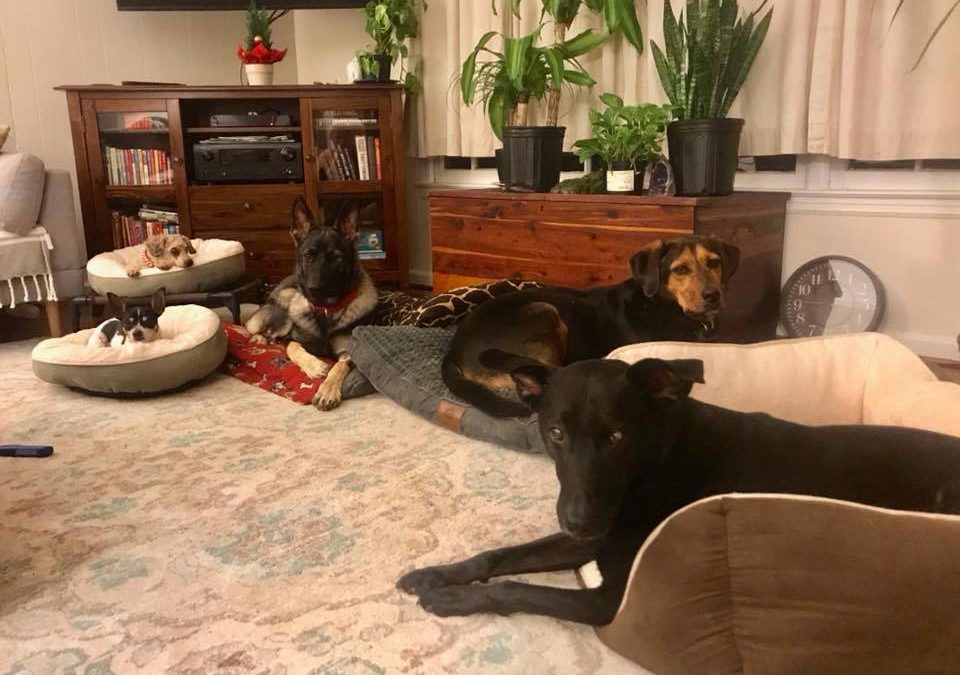As a dog trainer, I see many families who struggle with dogs and kids in the home. I am asked all the time “How do I get my dog to not nip, jump, or bite at my child?” “We have a baby coming. How can I help my dog adjust?” “What is the best family dog?” “What is a good dog for my kids?” “Which small dog is best with kids?”. There is no right answer to these questions …. instead it is actually more about how you decide to control the interaction between your dog and your children. Unfortunately, the interaction between dogs and children are not always great ones and many people end up surrendering dogs to shelters, rehoming them, or even tossing them outside simply because the dog and the children together become way too much to handle.
Simple existence and learning to respect one another’s boundaries is the fundamental key to keeping both children and dogs, safe. The bigger idea here is that dogs and young children do not always need direct interaction to form a bond. Your child does not have to spend the majority of the time petting and touching a dog to form a bond. Physical interaction is not the key component to relationship building within households with dogs and young children. Actually, the safest way for a dog and child to start a relationship is to physically exist in the same space without direct interaction.
George is practicing calm/stable behavior while Raeya (3 years old) plays with toys in the front yard. The dog and child are existing but not directly interacting. George has parameters to follow which keeps him from trying to take toys out of her hands, knock her down, or put things in his mouth that he should not. By giving the dog parameters which come from obedience, the relationship starts on the right track and can prevent issues from cropping up later. In essence, what you are doing is teaching both young children and the dog to respect one another’s personal space. There are no words for how valuable it is for child and dog to understand each other’s parameters.
Obedience training and implementing some simple guidance can provide structure for your dog and are keys to success in ensuring your dog is the best family dog possible. For example, the “place” command in the house (specifically, a down on place) is a great way to provide structure to your dog and is the path to teaching your dog to be calm on command. The dog should lay down and stay on that place object… at first , this can be difficult for a dog but eventually, with consistency and routine, the dog should learn to relax into what he/she is doing – basically, watching the world go by vs mouthing, nipping, jumping, taking toys that may or may not be his/hers etc. While there should be plenty of time for your dog to get physical exercise and expend physical energy, inside of your home is not one of them as that is where you need your dog to be calm and well behaved around your children. Another point to note here, is that if you have asked your dog to be calm on his/her place object, it is also extremely important that your children respect the dogs space and boundary on the place object. They too should understand that is not the time to mess with the dog.
Teaching dogs and children to exist without always having to interact keeps your family members (two and four legged) safe and ensures lasting and positive relationships for all! By ensuring parents understand how to build successful relationships between their dog and child we can prevent dogs from ending up in a shelter because they couldn’t be trusted not to lick, jump on, knock over, bite, or scratch children.
If you are struggling with the relationship between your young children (or child) and your dog or you are welcoming a new baby into your home, feel free to get in touch! Any of our dog training courses can help you learn how to navigate this relationship, turn it around for the better, or set you up for success when introducing a new baby to your family.







